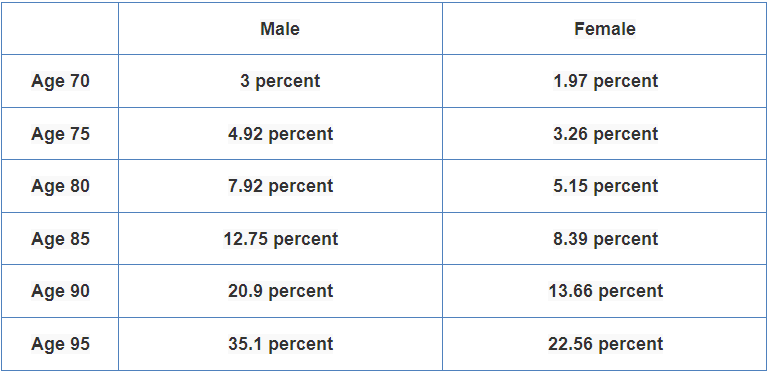A common question is how annuities compare to other financial products that seem similar such as bonds, certificates of deposit (CD) and money market funds. After all, each of these products promises to provide some type of fixed return in exchange for your investment.
Looking at a simple life annuity can help answer this question and may also highlight what makes the life annuities unique among all financial products.
Briefly, a life annuity (sometimes referred to as an immediate annuity or an income annuity) provides guaranteed payments to you (or you and a spouse if you are married) as long as you live. These guaranteed payments are in exchange for a lump sum premium that the annuity owner provides to the insurance company.
As discussed in a recent post, life annuities provide their owners with a unique yield component. This extra yield (and therefore additional income for the owner) is referred to as the mortality yield.
The mortality yield is a function of survival probabilities so it increases with age (because survival probability decreases as we age).
Calculating the mortality yield helps demonstrate one of the key differences between annuities and other products such as bonds, CDs and money market funds.
The following table shows the mortality yield at various ages for a hypothetical man and woman. It is assumed that both are in excellent health, and the survival probabilities are based on living 1 additional year at each of the listed ages.
Calculations are based on the current 10 year Treasury rate of 2.125 percent.
The results show the extra return provided by a life annuity over the course of 1 year.

- tom's blog
- Log in to post comments


Comments
John Wingate replied on Permalink
Great Blog
I just started working with Annuities about a month ago. Annuities can be great investments for people that may be lost their job and can roll it over into an annuity. Also, they may be able to have 2 to 5% bonus on what they roll over.
Tom you have a great annuity blog here and helps me learn more about annuities.
Dan replied on Permalink
sure, but better to wait for higher rates/returns?
I don't think there is any question that an annuity offers a better return than today's low interest rates. But does it make sense to lock in these somewhat "higher" returns for 10 or 20 or 30 years? Or wait, and hope (seems strange, huh?), that interest rates go up? I know there is the issue of what will happen to your stashed assets when those rates go up - but locking in such historically low yields doesn't seem like a great idea.
tom replied on Permalink
Tom
Good point and a valid concern.
Laddering annuity purchases is one option to consider:
http://www.annuitydigest.com/best-annuity/laddering-annuity-purchases